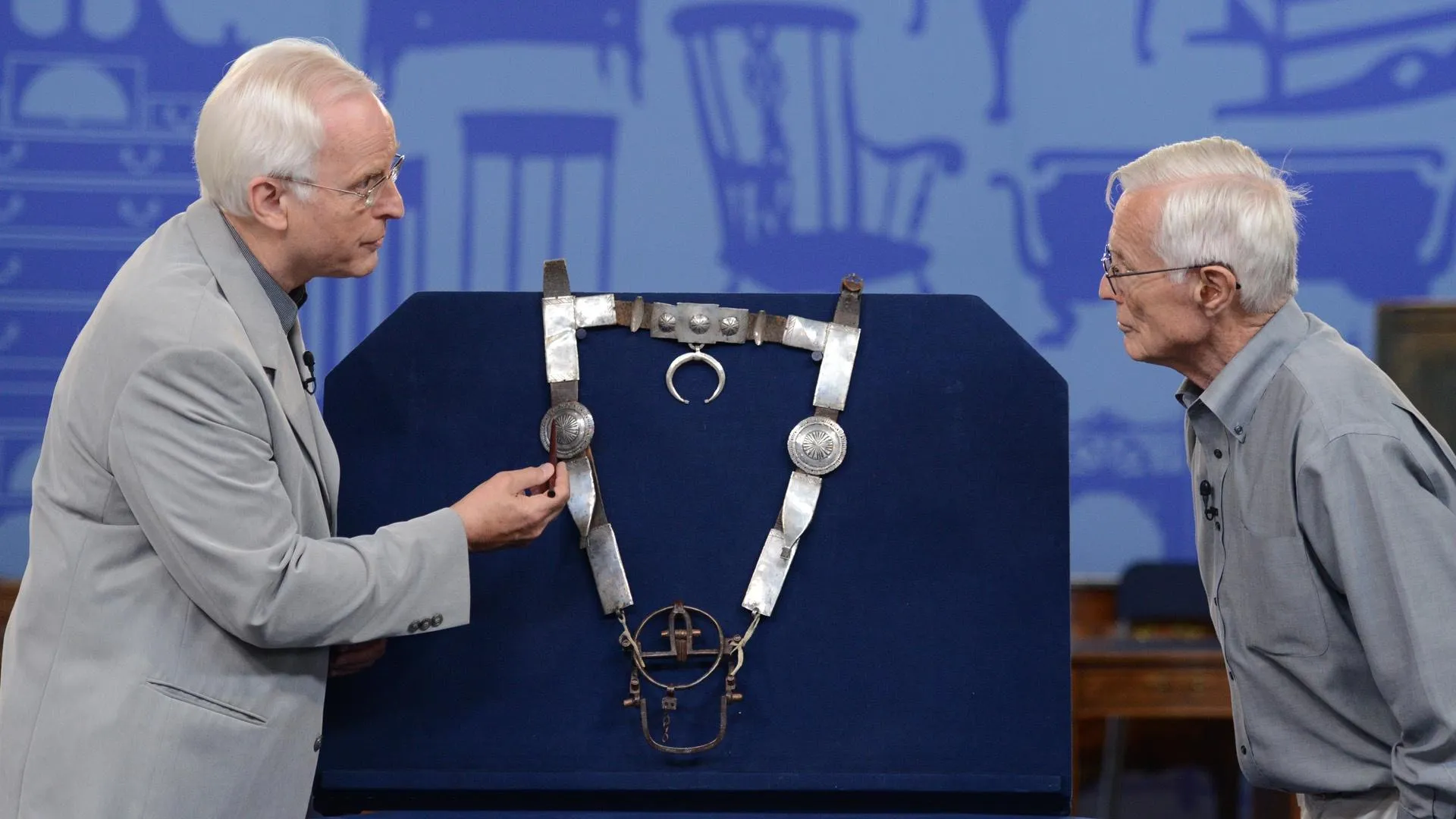GUEST: I went to my favorite jeweler, and they were in their estate case, and of course I like shiny objects, so I asked, "Do you have any history about where they come from?" And he said, "Well, we think they belonged to a Playboy bunny "that she decided to just get rid of some of her jewelry because she was getting older, and we have them." And I bought them for about $200, and I have no clue... I wear them for everyday.
APPRAISER: And how long ago did you purchase these?
GUEST: Oh, about... I would say about four... three or four years ago.
APPRAISER: Okay, and did they give you any idea how old these were?
GUEST: No. I don't know anything about the jewelry.
APPRAISER: Okay, well, I saw them earlier and I fell in love with them. They're so beautiful. So you've got the top of the earring with the bottom pendant, and all this wire work, we refer to this as filigree.
GUEST: Okay.
APPRAISER: A couple of countries are very well known for filigree work-- Italy, France, Spain. The other thing that's quite unique about these is that the bottom portion, the pendants, have these raised areas that look like cameos. They're sort of emulating a cameo, but it's done in gold.
GUEST: Okay. Is this a female and is that a male?
APPRAISER: Yes, it's a male and a female portraiture. So these earrings are really quite unusual because they're quite old. These earrings were made somewhere between 1760 and 1790.
GUEST: Oh! (gasps)
APPRAISER: And they're what we call French provincial. They were made somewhere between southern France and Spain based on the stylization of the motifs. You look like you're awfully excited.
GUEST: I just... (chuckles) (voice breaking): I wear them as... like junk jewelry.
APPRAISER: No, they're real. They're really nice, too, they're beautiful. So with these type of earrings, these are called a European back, so you thread them through your ear backwards, basically.
GUEST: Right.
APPRAISER: And so the hallmarks are right along the edge of the wire here. They're going to just look like little tick marks on the metal, but both of the earrings have that.
GUEST: Okay.
APPRAISER: And it's really very rare to find these types of earrings in the marketplace because after the Revolution, people were melting down their gold just to survive. So finding a pair of earrings that are intact and that haven't been altered is really quite unusual.
GUEST: Wow.
APPRAISER: They're really wonderful.
GUEST: Wow.
APPRAISER: I was just so excited when I saw them because...
GUEST: And I love them. They're my... I love these earrings.
APPRAISER: They're great. Now, you said you paid $200 for them, okay? Well, I think you got probably the best deal anybody ever got on a pair of earrings because today's market, if these were in auction, these would sell for somewhere between $3,000 and $5,000.
GUEST: Oh, wow. Okay.
APPRAISER: Because collectors who want these items, they just never come up.
GUEST: Okay.
APPRAISER: Because they're so rare.
GUEST: Wow. Well, I'll... can I clean them with any...? Because I've never cleaned them.
APPRAISER: I would leave them as is. They don't need any cleaning. They're actually in extremely good condition.
GUEST: Okay.
APPRAISER: I would just leave them as is and wear them and enjoy them.
GUEST: Wow, I will, I'll treasure them.











